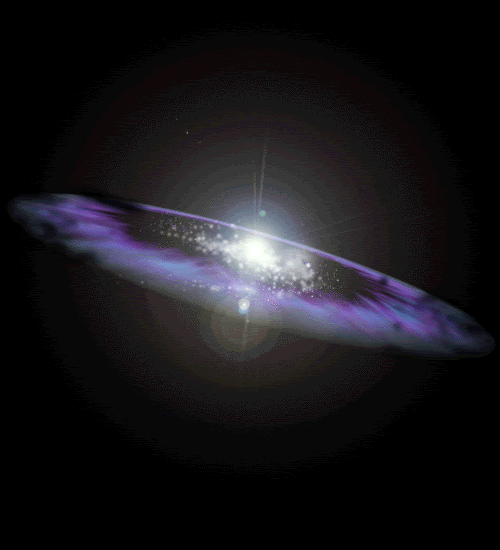A Short History of the Early Universe
The Big Bang started the chain of events that eventually led to the Earth and mankind. After the initial "Bang", the Universe expanded like a giant balloon. While this expansion was taking place, the initial "dust" (hydrogen,helium) formed into "structures" where gravity started pulling them together.First, Hypergiant stars (the size of galaxies) formed, and they "burned out" quickly - supernova-ing and "enriching" the surrounding dust with heavier elements (metals), while becoming supermassive black holes.
 |
| The Big Bang |
 |
| Star formation in a galaxy |
(NOTE: This Intro is highly condensed - even to the point of inaccuracy. There are many different theories about parts of this timeline - I have tried to make it simple in order to get past it quickly and delve into my own Solar System theory.
No comments:
Post a Comment